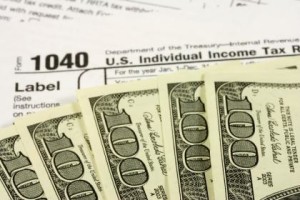Let me know what you think…

Beyond being thankful for meaningful work and earning a steady paycheck, I’m eternally greatful for the “invention” of Flex Fridays. Getting every other Friday off makes getting up early and putting in long days totally worth it, especially when for the most part our kids remain in child care. Now we’ve got a double bonus, since Hubby was just approved for a Flex schedule (after six months!). And no, I’m not lounging around in a hammock, but this image does make me smile even if it is a fantasy.
Now how does our work schedule relate to family finances? On top of fewer miles to commute/pollute, there are plenty of financial implications regarding your work schedule:
All this time is valuable for busy working parents, and there’s a movement afoot to shift our entire culture toward flexible scheduling. MomsRising, my favorite moms activism group, has flexible work as a top priority on their policy agenda. I couldn’t agree more and 89% of employees think that flextime or telecommuting are an important factor in evaluating a prospective position (LifeMeetsWork).
I know that in the scope of history, we have things pretty good, but I truly believe that flex schedules are the next wave of labor policy. It’s really essential for productivity both at work and home. If you think there’s a chance your employer might be receptive, there are some good tips to requesting a a flexible schedule.
Do you have a flexible schedule?
How does it help your family and your finances?
~*~*~*~*~*~
Sustainable Family Finances
The story of a family creating an abundant and sustainable life.

Trends change, and lately they are turning a darker and darker shade of green. In college I met an environmental lecturer who said that we would know that we were reaching a sustainable society when the clothes on our backs no longer destroy local cultures and environments. Apparently the darker the dye the worse the practices, and I happened to be wearing a brand new pair of black pants and eggplant purple top; I felt chagrined.
The runway shifts may have begun with a few local “trashion” shows, like Portland’s Junk to Funk, which shows how reused materials can become fashionable. Now the hot handmade online trading site Etsy has it’s own Trashion network for crafters with a knack for upcycling. A quick search also came up with a list of the Top 50 Green Fashion and Design Blogs…I’m definitely going to have to take a peek.
This week the Seattle Times had a interesting article on how “ Green is the New Black .” Apparently even during the recession earth-friendly apparel is moving fast. I find this interesting, because despite the appeal we can’t afford Patagucci or local boutique baby clothing. I bought an overpriced bamboo shirt two years ago, and I still feel a twinge of guilt. I also have a little bit of mommy-guilt around this issue too, because my Mama sewed our clothes until we started asking for store bought in grade school. Yet, as a busy working Mama, I can barely manage to keep my kiddos in clothes that fit them, none-the-less sew them myself!
Does your family purchase eco-friendly attire?
Or would you if it were more affordable?
~*~*~*~*~*~
Sustainable Family Finances
The story of a family creating an abundant and sustainable life.
Now that we’ve doubled our household members, I want to calculate my family’s carbon footprint . As promised, I’m planning to test out several calculators to make sure that I’m getting an accurate baseline to track our progress.
The first is the
EPA’s Household Emissions Calculator
, here are the results:
As described on the page, it was pretty quick and only took me about 15 minutes once my energy bill averages were on hand. It was really intuitive and seemed to cover all the household basics. It included our house size, number of family members, gas/electricity bills, car miles and mpg, and recycling habits. According to the calculator our household emits an average of 1,021 pounds of CO2 per person, while the average American emits 20,750.
Yet, it seemed too good to be true, and based on the info I provided it just doesn’t compute.
The calculator automatically identifies that ways for you to reduce your footprint and estimates how much money and emissions you would save per green action. In fact, when I promised to do every action suggested, it calculated that we would have negative annual carbon emissions. We may try to live green, but that’s ludicrous. Talk about bursting my green bubble! My family is a long way from living a net-zero lifestyle, certainly a trek from the off-the-grid cabin where I first grew up.
However each energy savings step was pretty interesting. It calculated that if we replaced our energy hog of a refrigerator we could save $51 annually, 479 pounds of CO2, and reduce our total emissions by 47%. If I were to manage hang drying half of our laundry we could save $40 a year, 375 pounds of CO2 and reduce our total emissions by 37%. I couldn’t think of hang drying our clothes until our Girly is potty trained from her cloth diapers (I’m barely managing to get the ironing done as it is!) But it is very helpful to see specific steps and the expected results from each actions, it makes them as simple to take as they really can be.
So, while not entirely discouraging, I’m glad that I set out with the plan to test various online calculators, hopefully we’ll find the best of all calculators.
Have you used this carbon calculator and get accurate results?
Did it help your household habits?
~*~*~*~*~*~
Sustainable Family Finances
The story of a family creating an abundant and sustainable life.
 You may still have a month left to file your taxes, but in our household they get done as early as possible, mostly because we usually get money back. We just had the discussion again whether or not we should adjust our deductions so that fewer taxes would be taken out on a monthly basis. We both agreed that for us it feels better to get an annual “bonus” than an unbudgeted bill to pay. On a daily basis I do my best to not fret over taxes, so why would I want to stress every spring?
You may still have a month left to file your taxes, but in our household they get done as early as possible, mostly because we usually get money back. We just had the discussion again whether or not we should adjust our deductions so that fewer taxes would be taken out on a monthly basis. We both agreed that for us it feels better to get an annual “bonus” than an unbudgeted bill to pay. On a daily basis I do my best to not fret over taxes, so why would I want to stress every spring?